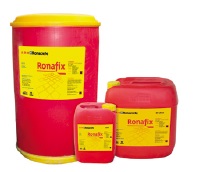Ronacrete Far East is building a legacy of excellence with a drive to reduce the environmental impact and showing small businesses how it should be done.
There’s often a pervasive feeling in matters of the environment and industry that significant change can only be brought about by the biggest players. This line of thinking says that changing the work practices and production techniques of small and medium enterprises, for example, is desirable but ultimately a futile exercise, without substantive change from the multinational conglomerates.
Ronacrete (Far East) Ltd is working to smash that argument.The Hong Kong headquarters of the firm had introduced an audacious timeline to assess its consumption and output of carbon in a comprehensive plan to reduce its footprint.Brian Clements, the company’s managing director, says the impartial audit conducted by an external authority is being driven by as much by a desire to show the construction industry the way forward, as it is to do the right thing.
The evolution in the firm’s business practices will see their Wan Chai office and factories become carbon neutral within the next 12 months.“We’re at the beginning of the zero-carbon process and from an industry perspective I’d say it was important to get an outside body to run the audit. The review is a first step. The next step is ‘How am I going to wipe it out?’.
A typical carbon and energy-use audit is seen as the cornerstone of any move to reduce the carbon footprint in any industry. The probe seeks to reduce the complexities of production to a single number, offering an answer to the question “How much?”Any rigorous assessment should include: direct emissions that come from burning fossil fuels in the day-to-day operation of the business; indirect emissions that are, for example, generated as a by-product of electricity consumption; and emissions from the company’s constituents, the clients, employees, contractors and vendors that are engaged in getting a product into the hands of an end-consumer.
In Ronacrete’s case, the audit should take three to four months.Armed with a top-line number and an indication of which parts of the business are the biggest polluters, management can act to offset emissions by investing in renewable resources, such as wind power or forest plantations; actively reduce energy consumption; and by trading carbon credits.
The company works in bonding, concrete repair and coatings, waterproofing, flooring and civil engineering. Almost half of its 110 staff work in production facilities on the mainland, the remainder in Hong Kong.
Mr Clements has steered the company towards products with lower levels of volatile organic compounds and polymer mix products to meet what he sees as a growing market demand for more environmentally friendly alternatives. These are true, cutting edge products, that are considered best in class on a global scale.
“We have found that generally over the past 10 to 15 years, there has been an increase in the desire for environmentally products,” he says.While the company has responded with products that meet certain LEED (Leadership in Energy and Environmental Design) standards, a more comprehensive ratings regime was required.
The wider industry response to the company’s initiative has been varied. Convincing architects that the formulations are up to the job is the easy task. Mr Clements says architects and design teams are often highly motivated to incorporate the products, it is where the rubber meets the road in the final costings that the developer questions the importance of using more environmentally friendly construction products.
One of the main objections is on price. World’s best innovations can more costly – anywhere up to 10 percent more on average, he says.
The desire to be a better corporate citizen fits in neatly with Ronacrete’s other in-house drives towards quality certification and to meet the increasingly ardent inspection demands within Hong Kong through its certification programme.
Mr Clement says quality certification to international ISO standards is important, but does not necessarily guarantee a high-performance product that must hold a building together for its lifespan. The difference is organisational culture, which has been a focus of his management.
“You can say that you work within a certain standard but if you want to be sceptical, you might ask yourself what does that actually mean? It means you’re producing a consistent product. Quality is driven by a culture and a desire to change for the better.”
There is an element of the chicken and the egg in forging a new role as a zero-carbon company in the marketplace. Mr Clements says the industry as whole has a long was to come, but felt it was important for Ronacrete, a company with a 30-year track record in Hong Kong and now throughout the Asia-Pacific region, to take a leading role.
“At this moment, we’re in the early stages of change as far as the industry is concerned. There are probably very few people that come to us and say ‘We want to deal with a green company’.
“I think that there is, slowly and surely, a grassroots interest in environmental matters. And it’s because Ronacrete is a family-run business that there is that agility and an opportunity to show the way.” “These are long term goals and they take a long-term timeframe.”












